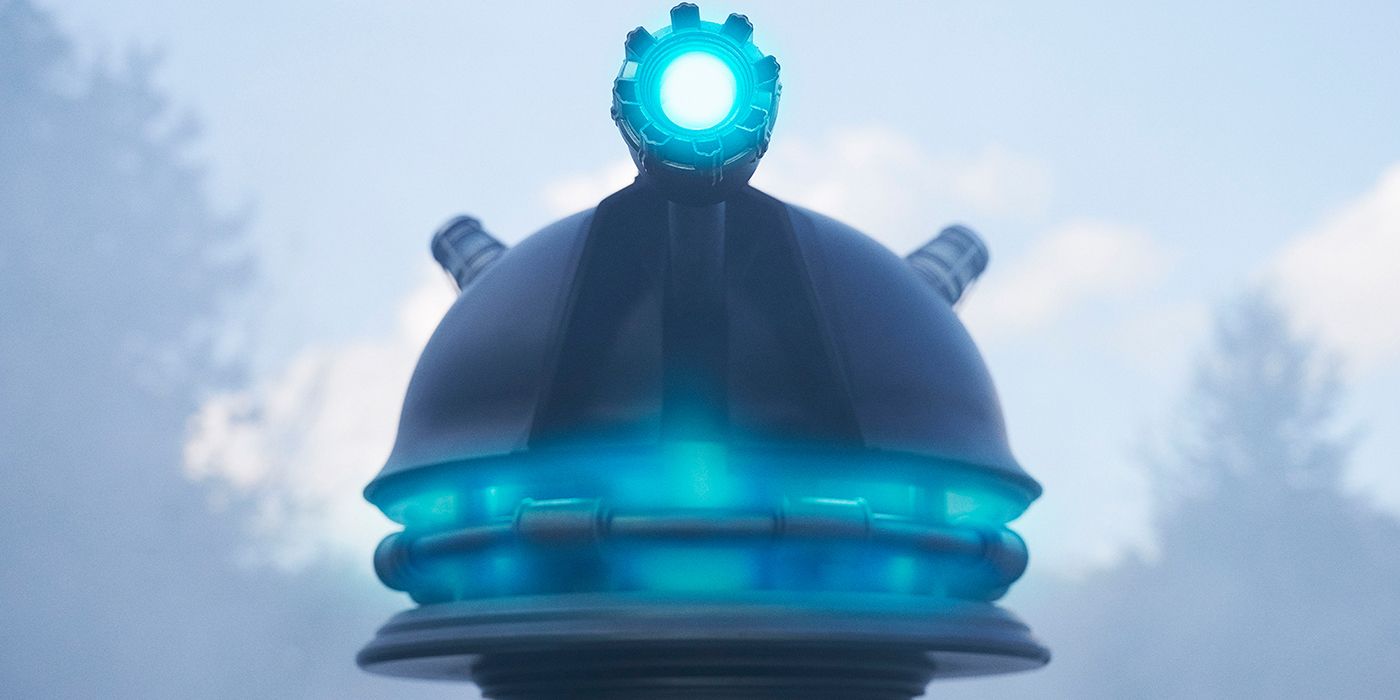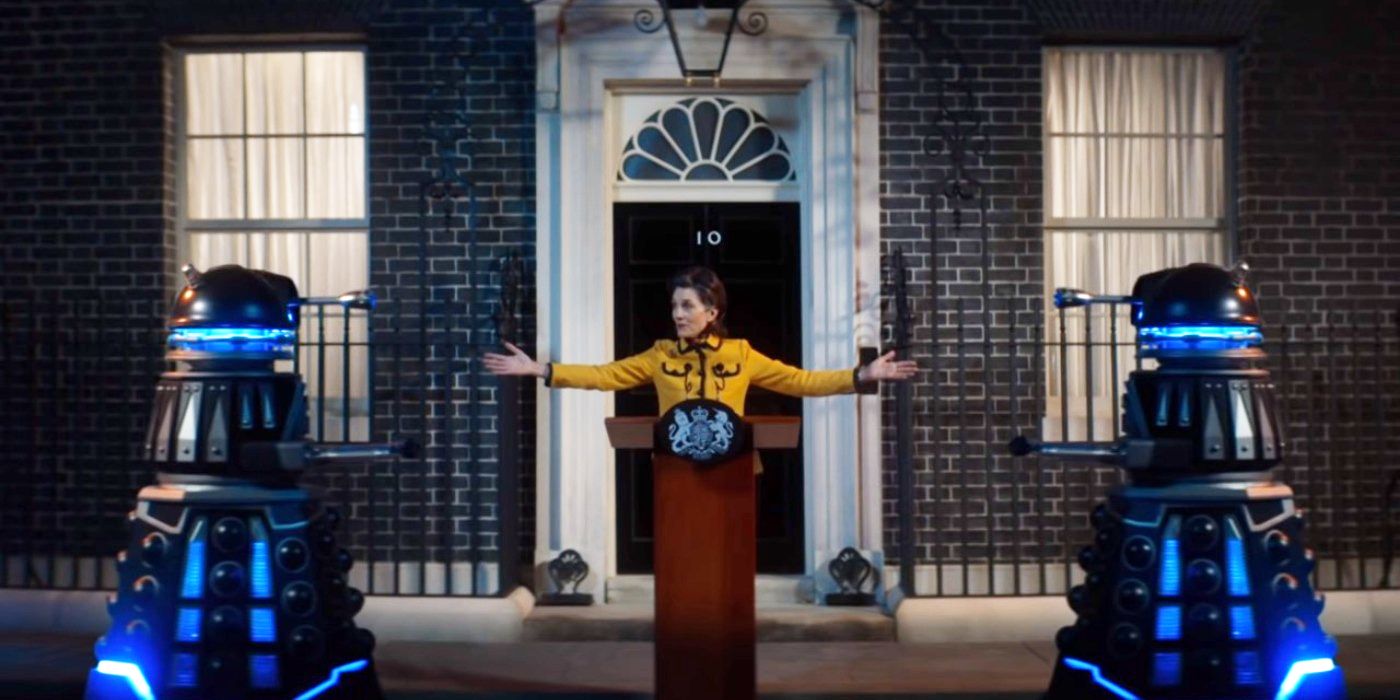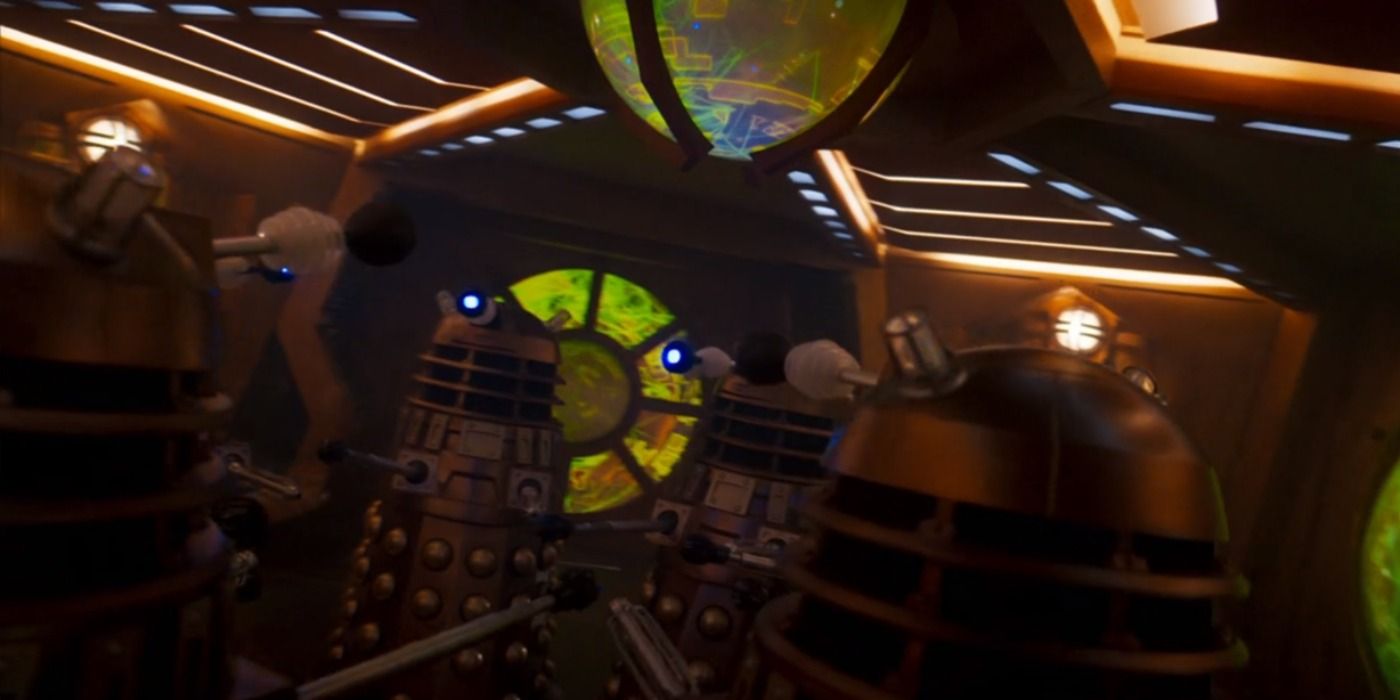The Doctor Who Holiday Special sees two races of Daleks collide in battle - with the fate of the Earth at stake. The Daleks have always been the greatest villains of Doctor Who, ever since their introduction all the way back in 1963. It didn't take long for so-called "Dalekmania" to grip the United Kingdom, with schoolchildren running through the streets calling out, "Exterminate!"
Current Doctor Who showrunner Chris Chibnall grew up with the classic series, and consequently, he has a lot of love for the malicious pepperpots. He brought the Daleks back in the 2019 New Year's Day Special, "Resolution," when he introduced a Reconnaissance Dalek that had crashed on the Earth millennia ago. The "Resolution" design was stunning, and in the 2020 Holiday special he introduced a whole new breed of Daleks visibly inspired by that design. According to Chibnall, the 2020 Holiday Special should be seen as an origin story for the new Daleks.
And then events took an unexpected twist, with the Doctor summoning another army of Daleks to take on this new breed. Soon the United Kingdom was the site of a Dalek civil war, with the two different types of Daleks going head-to-head, each attempting to exterminate the other. Here's why there were these two different Dalek factions - and why one ultimately triumphed over the other with such apparent ease.
Doctor Who's New Dalek Design Explained
The story of the new Daleks begins in "Resolution," when an ancient Reconnaissance Dalek was awoken from suspended animation. The creature was revived on New Year's Day 2019 in Sheffield, and it was forced to recreate its classic outer shell using junk from a warehouse. This restored Dalek then went on a brief rampage, even attacking Britain's GCHQ - the center of the country's intelligence and security services - before being destroyed by the Doctor and her fam. Unfortunately it seems the Doctor didn't do a good enough job, because she left the shell behind - and that was picked up by corrupt businessman Jack Robertson, who previously appeared in Doctor Who season 11, episode 4.
Robertson had his scientists reverse-engineer the Dalek technology, transforming the Reconnaissance Dalek into a sophisticated battle drone that he had 3-D printed using human raw materials. Unfortunately, he was unaware one of the scientists also discovered organic samples inside the original shell, and successfully cloned the creature that had lay within. Every Dalek embryo is genetically programmed with the intelligence and knowledge of the Dalek race; while this new Dalek was an imperfect clone, it retained enough Dalek to want to exterminate all humans and conquer this sector of the universe. The creature hacked into Robertson's systems, acquiring a lab in Osaka, Japan, and used it to create more clones.
Jack Robertson's factories churned out thousands of Dalek drones on order for the UK government, while the Dalek creatures were secretly being mass-produced in Japan. The Daleks waited until the drones had been distributed across the UK, and then teleported the creatures into their casings. Suddenly England was home to an army of new Daleks, whose first attack included the extermination of the Prime Minister.
Doctor Who's Dalek Death Squad Explained
The Doctor did the unthinkable: she sent a signal out into the time-space vortex, summoning what she referred to as a Dalek Death Squad. She understood that the Daleks are motivated by a deep, genetically-programmed hatred of all other creatures; they have what Patrick Troughton's Second Doctor called "a dislike of the unlike." The Daleks believe themselves to have been genetically engineered as the supreme beings in the universe, and they desire to prove their superiority by destroying everything that is different. Genetic purity is essential to the Daleks, and - as illustrated in Una McCormack's recently-published "Time Lord Victorious" novel All Flesh Is Grass - the Daleks would consider the very existence of their genetically impure "cousins" to be heresy of the highest order.
The Reconnaissance Dalek had left Skaro millennia ago, and Dalek science had no doubt advanced over time, meaning these Daleks were equipped with technology beyond their Terran cousins. What's more, their armor and weapons were not cobbled together using human equipment and raw materials from Earth, but rather had been fashioned using all the resources of the Dalek Empire. Their casings will be made of a substance called Dalekanium, far more protective than any substance found on our planet. Thus it is hardly a surprise the Dalek Death Squad triumphed in this civil war - especially given they arrived in a saucer ship, and a single Dalek saucer has the power of a Death Star. If the Revolution Daleks had proved to be a challenge, the Death Squad would simply have destroyed the Earth to deal with them.
-
The idea of a Dalek civil war is an attractive one, and in fact the plot has worked its way into several previous Doctor Who stories, most notably the Patrick Troughton adventure "The Evil of the Daleks." Oddly enough, though, the Doctor Who Holiday Special bears rather more similarity to a Big Finish audio-book Blood of the Daleks, by Steve Lyons, which essentially followed the exact same arc - but on an alien world, and without new Dalek designs. It's tempting to dismiss the new Daleks as a second-tier threat, but it's worth noting the Doctor was forced to take one of the biggest gambles of her lives in order to deal with them; she was literally risking the entire planet, because the Dalek Death Squad could well have simply exterminated humanity out of spite once they had killed off their genetically impure cousins. What's more, although both the Doctor and the Death Squad Daleks believed the Revolution Daleks were wiped out, that assumption may well prove to be incorrect. Chris Chibnall teased the Doctor Who Holiday Special is an origin story, which suggests audiences haven't seen the last of this new iteration of Daleks. In the past, the Doctor has compared the Daleks to cockroaches who survive anything and keep coming back; that could well prove to be true in this case as well.



